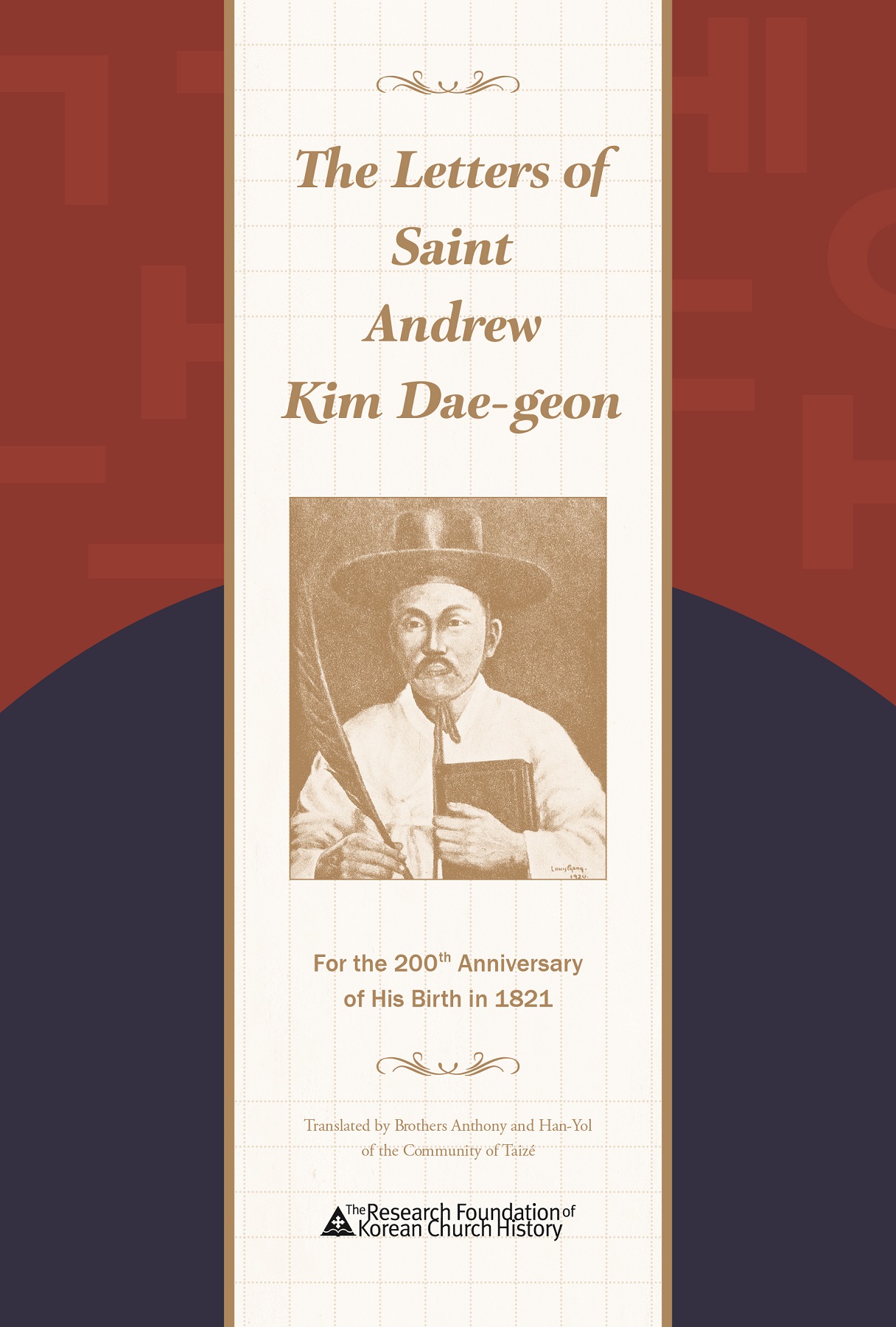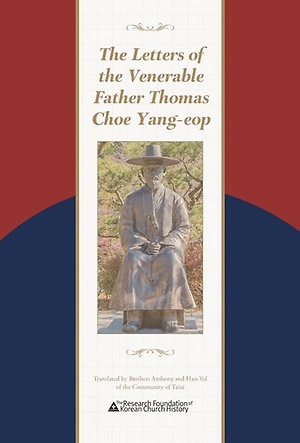
St. Simeon Berneux
Korea's Catholic Martyrs

List of those canonized or beatified
Chronology of the records of the early martyrs and their 1925 Beatification (English version of a Korean text)
Chronology of the records of the early martyrs and their 1925 Beatification (English version of a Korean text)

St. Antoine Daveluy
The letters and reports on the Korean martyrs by St. Andrew Kim Dae-geon

The Latin (or French) originals of his letters can be viewed here (there may be a few small errors) :
A series of texts in French and Latin about the life and death of Fr. Kim used for his beatification
Saint Andrew Kim Dae-geon and the Venerable Thomas Choe Yang-eop

The first two Korean priests, St. Andrew Kim Dae-geon and the Venerable Thomas Choe Yang-eop, studied together in Macao before entering Korea as priests. Kim Dae-geon was executed in 1846, a year after returning to Korea. Thomas Choe entered several years later and served as priest for some 10 years before dying of exhaustion in 1860.
Both wrote about 20 letters in Latin to the French priests who had educated them. English translations of both sets of letters have been made by Brothers Anthony and Han-Yol. The letters of Saint Andrew Kim Dae-geon were published in 2021. Those of Thomas Choe were published late in 2022. These books are currently out of print
The letters written by Thomas Choe Yang-eop

The Latin originals of his letters can be viewed here (there may be a few small errors) :
 The
The The “Documents of Mgr Daveluy” in the Archive of the IRFA in Paris consist of copies mainly made in 1887 of originals now lost, bound in eight volumes.
Volume 1: texts written before ordination
Volume 2: texts written after ordination
Volume 3: Notes for the introduction to the History of Korea
Volume 4: Notes for the History of the Martyrs of Korea
Volume 5: Notices of the Principal Martyrs of Korea
Volume 6: Letters to the MEP
Volume 7: Letters to his family before 1846 a
Volume 8: Letters to his family from Korea
Saint
Marie-Nicolas Antoine Daveluy, Bishop
(1818-1866)
Born on March 16, 1818 in Amiens, Antoine Daveluy was ordained on December 18, 1841. After 20 months as vicaire in the parish of Roye, he entered the Society of Foreign Missions in Paris. Sent to Macao, he met Bishop Ferréol, third Apostolic Vicar of Korea, who asked him to accompany him in his mission. He accepted and went to Shanghai where he attended the ordination of Father Andrew Kim Dae-geon, the first Korean priest.
On August 31, 1845, accompanied by his bishop and the new priest, he left Shanghai and after a long and perilous crossing, on October 12, all three arrived clandestinely in Korea.
In 1856 he was appointed coadjutor to newly arrived Bishop Berneux, with right of succession, and consecrated bishop in Seoul on March 25, 1857.
From 1856 he had set himself to the arduous task of collecting documentation concerning the culture, history, administration, geography, the history of the Church in Korea and the deeds of its many martyrs. Copies of the documents, which he had translated into French, were sent in 1858-1862 to Paris to the seminary of the Foreign Missions Society. They served as the main source for the "History of the Church of Korea" by Claude Charles Dallet published in 1874. Soon after these documents had been sent to Paris, a fire in Seoul destroyed all the original documents in the house of Mgr. Daveluy.
He was arrested on March 11, 1866 and beheaded on the 30th of the same month at Solmoi on the West Coast of Korea with two other priests. He was 48 years old and had worked for 21 years in Korea.
He was canonized on May 6 1984 in Seoul with the 102 other Korean martyrs.

Daveluy's Archive Volume 4: Notes for the History of the Martyrs of Korea, (from the beginning until1830 and 1839-1840) was the main source for the earlier part of Dallet's History. The account based on it ends with the end of Chapter 1 of Dallet's Volume 2 Book 3.
Daveluy says that his source for information about the early years around 1784 are notes written by Jeong Yak-yong aka Dasan. These notes have not been preserved.






